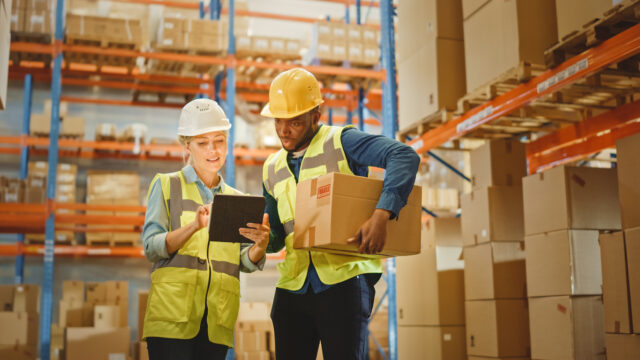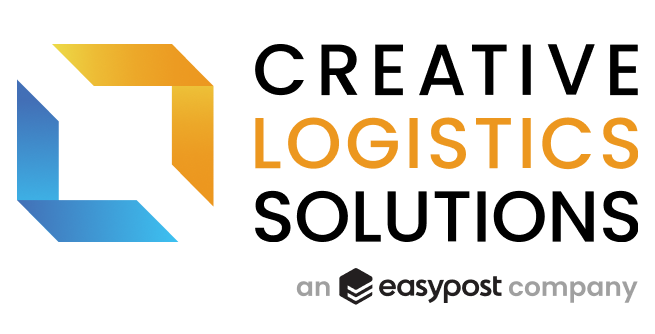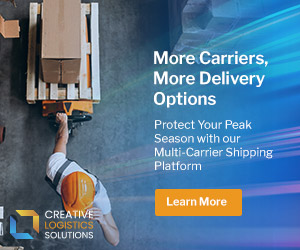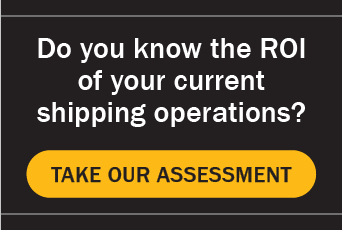What Is Ecommerce Logistics?
Imagine going on a long-awaited vacation. You wouldn’t just show up at the airport and hope for the best, right? Instead, you’d plan ahead by purchasing a plane ticket, booking a hotel, and packing your bags.

Ecommerce logistics is similar to planning your big trip. Products don’t get from point A to point B on their own—businesses must carefully develop a process for sending out orders.
Simply put, ecommerce logistics is the way businesses get their products to customers. It encompasses order fulfillment, inventory management, shipping, returns, and more.
The success of your online business hinges on efficient ecommerce logistics. Whether you’re just getting started or looking to optimize existing processes, this article will help you navigate the complex world of ecommerce logistics management.
What is an ecommerce supply chain?
An ecommerce supply chain is a system of interconnected processes involved in producing, distributing, and delivering goods sold online. When you have an optimized ecommerce supply chain, products and information flow seamlessly throughout the entire lifecycle of an online purchase.
The components of an ecommerce logistics supply chain
From order fulfillment to reverse logistics, you need to have every step of the product journey planned out. Let’s take a look at some key touchpoints in your ecommerce logistics supply chain.
Order fulfillment
Order fulfillment is the process of receiving incoming orders, picking products from your inventory, packing them securely, and arranging for shipping. It goes hand-in-hand with the customer experience—when packages are lost, late, or damaged, customers aren’t happy.
Unfortunately, fulfillment doesn’t always go as planned; one survey reports that 78% of respondents have had a late delivery, while 56% have received a damaged package. You can set your order fulfillment process apart by choosing high-quality packaging materials, working with reliable carriers, and optimizing delivery routes.
Inventory management
Inventory management is the practice of tracking where products are stored, what’s in stock, and what needs to be replenished. Efficient inventory management helps you stay on top of demand, keeping your products available for customers who want them. Inefficient inventory management can lead to stockouts (running out of a product) or overstocking (buying more than you need).
Research has shown that reducing stockouts and overstocking can help cut inventory costs by 10%, and you can tap into the benefits of effective inventory management by using the right technology. Inventory management systems track stock levels, predict demand, and even reorder automatically when stock is low.
Warehousing
Your products have to live somewhere before they’re sent to customers. If your ecommerce business is just getting on its feet, that place might be a garage or spare room. If you have a larger inventory, it could be your own warehouse or a shared warehouse space. Alternatively, you might partner with 3PLs to store goods or even bypass warehousing entirely by using dropshipping (see the section “Types of logistics management” to learn more).
No matter where you store inventory, warehousing is more than just storage—it’s strategic. To borrow a well-known real estate phrase, it all comes down to “location, location, location.” Having distribution centers close to your customers helps decrease shipping costs and delivery times.
Shipping
Shipping isn’t as simple as putting products into boxes and sending them off. You need to answer lots of questions first. Is the address correct? When does the delivery need to arrive? What fees does my business (or the customer) have to pay? What carrier should I use?
You can use shipping software to automatically answer those questions for you. The system will collect data about each order, suggest the most cost-effective delivery options, and help you print the appropriate shipping labels.
Returns
If ecommerce logistics is like planning a vacation, the returns process is like coming back home early because of a natural disaster or another unforeseen event. When customers receive a product that doesn’t meet their expectations, they can return it to your business where it’s restocked, refurbished, recycled, or thrown away. When that happens, the logistics process takes place in reverse.
Like order fulfillment, your company’s returns process plays a major role in customer satisfaction. Processing returns quickly can turn disappointed customers into loyal ones. To keep returns working just as smoothly as normal logistics, create a clear returns policy and provide a straightforward way to initiate returns.
A hassle-free returns policy doesn’t just keep customers happy, it can also determine who becomes a customer. Forty-nine percent of consumers say a returns policy influences where they shop, and 18% only choose stores that offer free returns.
Types of logistics management

Three popular types of logistics management are third-party logistics providers, in-house logistics, and dropshipping. Each approach has pros and cons, so you should choose the one that aligns with your business goals and resources.
Third-party logistics providers
Third-party logistics providers, or 3PLs, offer outsourced order fulfillment. They own and operate their own distribution centers, handling order processing, picking and packing, shipping, returns, and even customer service.
Pros of 3PLs include the following:
- Hands-off approach. Working with a 3PL allows you to maintain some control without having to handle the day-to-day tasks of order fulfillment.
- Access to the 3PL’s resources. Third-party logistics providers have access to infrastructure, technology, and expertise that you might not be able to access on your own.
Cons of 3PLs include the following:
- Limited control. Partnering with a 3PL can limit your control over the order fulfillment process. Developing a strong communication strategy can help mitigate this challenge.
- Dependency on the 3PL. If the 3PL faces operational problems or inefficiencies, the consequences will affect your business. Additionally, switching 3PLs can be expensive and time-consuming.
In-house logistics
Using a 3PL is a relatively hands-off strategy, while in-house logistics is hands-on. With in-house logistics, you ship products to customers out of your own brick-and-mortar stores or warehouses. In order to do this, you have to assemble a team to handle fulfillment, invest in the right technology and infrastructure, and form partnerships with one or more carriers.
Pros of in-house logistics include the following:
- Full control. With in-house logistics, you have full control over your supply chain processes. When you manage your logistics team directly, you can align operations with your business strategy.
- Tailored customer experience. When you handle your own ecommerce logistics, you have the flexibility to create a personalized customer experience from order to delivery.
Cons of in-house logistics include the following:
- Expensive. In-house logistics can be costly, as you have to invest in warehousing space, equipment, technology, and labor.
- Complex. To successfully handle logistics in-house, you need a deep understanding of warehousing, transportation management, and supply chain optimization. If you lack this expertise, you’re probably better off using a 3PL.
Dropshipping
Dropshipping is less complex than outsourcing or in-house logistics. With this method, you don’t own or ship inventory. Instead, your ecommerce store is the middleman between suppliers and buyers. When a customer places an order, a third party picks, packs, and ships it directly to them. You never even touch the product!
Pros of dropshipping include the following:
- Smaller upfront investment. Because it allows you to sell products without keeping them in stock, dropshipping is an effective model for ecommerce businesses with limited capital. Over 60% of retailers in one study said dropshipping reduced their costs.
- Wider product range. Dropshipping lets you offer a wider variety of products without having to deal with complex inventory management. This makes it easier to adapt to changing market trends and customer preferences.
Cons of dropshipping include the following:
- Thinner profit margins. Dropshipping saves on inventory costs, but it comes with extra fees that can shrink profit margins.
- Lack of quality control. When you rely on dropshipping platforms, you surrender a lot of control over the consumer experience. If the drop shipper makes mistakes or cuts corners, customers will walk away with a negative perception of your brand.
6 best practices for ecommerce logistics
Now you know what ecommerce logistics is, what makes up the ecommerce supply chain, and how to choose the right logistics management solution. Let’s dive into six best practices to keep in mind whether you decide to outsource logistics or handle it yourself.
Choose the right ecommerce logistics partner
If you’re a small or medium-sized business (SMB) looking to grow, consider partnering with a 3PL early on. Collaborating with a logistics partner from the start can help you get on your feet faster. They’ll help you streamline fulfillment, offer insights into shipping options, and give you access to resources and infrastructure you don’t have.
Balance value-adding logistics with profit
It’s the inescapable truth of ecommerce: a good customer experience is essential. But while it’s true that you should provide a stellar experience for your buyers, you also need to prioritize profits.
Ask yourself whether your logistics strategies will yield a meaningful ROI (return on investment). If things like customized packaging and same-day delivery don’t add value, you shouldn’t be doing them. When you calculate the costs, you might find that the “nice to haves” don’t have a significant positive impact on the bottom line. Even worse, any costs you can’t absorb will be passed on to the customer—and that definitely won’t make their day.
Offer fast, free shipping
In a competitive ecommerce landscape, online shoppers expect fast, free shipping. In fact, over 90% of consumers believe that two or three-day shipping should be the minimum offering, while 30% expect a same-day delivery option. Aside from people who were “just browsing and not ready to buy,” shipping fees are the most popular reason shoppers abandon their online cart.
To encourage customers to go through with purchases, you should explore ways to offer fast shipping while keeping costs low. For example, you might use regional warehouses and partner with carriers. Additionally, consider offering a free shipping threshold, which is when a customer must hit a certain order price before they’re eligible for free shipping.
Automate your logistics processes
It’s estimated that by 2035, 45% of supply chains will be mostly automated—think robots packing boxes and drones making deliveries. But even if that prediction doesn’t come true, automation is the future of logistics. Automation minimizes human error and speeds up processes. By letting technology take the reins for tedious activities, you’ll save time and operate more efficiently.
Locate inventory in the right regions
If most of your customers are located in California, it doesn’t make sense to house your inventory in a warehouse in Maine. By placing products close to where your customers live, you’ll keep shipping costs low for yourself and them. Start by using analytics to identify high-demand regions, then adjust your inventory distribution accordingly.
Diversify your ecommerce supply chain
The Covid-19 pandemic proved that when organizations aren’t prepared for supply chain disasters, it’s difficult to bounce back. As recently as 2022, 68% of businesses reported that supply chain issues were negatively impacting their operations.
While you don’t necessarily need to prepare for a full-scale pandemic, you should have backup plans in place for when your partners face disruptions. Working with multiple suppliers and carriers allows you to continue operations even if one link of your supply chain is weakened. Companies are catching on to this fact, with 54% currently looking to add new suppliers.
And you shouldn’t stop at adding suppliers. Diversifying your carriers doesn’t just protect you in case of disasters; it can have immediate benefits. Companies that rate shop and add additional carrier options can have a 30% reduction in shipping costs.
Conclusion
Your logistics strategy is closely linked to the success of your ecommerce business. By mastering the core components of an ecommerce supply chain, understanding the approaches you can take, and implementing best practices, you’ll create a process that delights customers and drives growth.
InfoShip can help! Our multi-carrier shipping software reduces shipping costs, allowing you to handle higher order volumes. Get in touch with one of our experts to see how we help you leverage our shipping solution to increase productivity.
Topics: ecommerce logistics,ecommerce supply chain,multi-carrier shipping software,order fulfillment,





